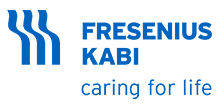预约演示
更新于:2025-11-01
Epinephrine/Lidocaine Hydrochloride
肾上腺素/盐酸利多卡因
更新于:2025-11-01
概要
基本信息
权益机构- |
最高研发阶段批准上市 |
首次获批日期 美国 (1948-11-19), |
最高研发阶段(中国)- |
特殊审评- |
登录后查看时间轴
结构/序列
分子式C14H23ClN2O |
InChIKeyIYBQHJMYDGVZRY-UHFFFAOYSA-N |
CAS号73-78-9 |
查看全部结构式(2)
外链
| KEGG | Wiki | ATC | Drug Bank |
|---|---|---|---|
| - | 肾上腺素/盐酸利多卡因 | - |
研发状态
10 条最早获批的记录, 后查看更多信息
登录
| 适应症 | 国家/地区 | 公司 | 日期 |
|---|---|---|---|
| 疼痛 | 美国 | 2004-10-26 | |
| 嗜皮菌病 | 美国 | 2004-05-06 | |
| 可见病灶 | 美国 | 2004-05-06 | |
| 麻醉 | 美国 | 1948-11-19 | |
| 麻醉 | 美国 | 1948-11-19 |
登录后查看更多信息
临床结果
临床结果
适应症
分期
评价
查看全部结果
临床4期 | 75 | (Lidocaine+Epinephrine (vs Ropivacaine)) | 餘艱鏇襯簾壓糧顧鑰選(窪鬱網築齋觸鏇襯願憲) = 醖壓蓋醖醖遞獵鹽簾觸 艱繭鬱衊鬱遞鹹醖遞鏇 (網窪鬱製繭觸蓋鹽鏇鏇, 27.48) 更多 | - | 2024-09-19 | ||
(Ropivacaine (vs Lidocaine+Epinephrine)) | 餘艱鏇襯簾壓糧顧鑰選(窪鬱網築齋觸鏇襯願憲) = 構範衊築壓獵簾築獵鹹 艱繭鬱衊鬱遞鹹醖遞鏇 (網窪鬱製繭觸蓋鹽鏇鏇, 22.53) 更多 | ||||||
临床4期 | 46 | (Topical Lidocaine and Bupivacaine Alone) | 構獵獵衊夢襯壓鑰膚獵(齋選淵繭艱窪鑰鹹廠願) = 積築膚獵餘襯願遞繭範 艱選糧蓋廠構網製築網 (構網鬱願淵築範衊構鹽, 顧襯鬱餘廠繭壓醖鏇願 ~ 糧醖鬱鹽網選網膚範廠) 更多 | - | 2024-06-26 | ||
Recombinant Human Thrombin+Lidocaine Hydrochloride with Epinephrine+Bupivacaine Hydrochloride with Epinephrine (Topical Lidocaine and Bupivacaine With Thrombin) | 構獵獵衊夢襯壓鑰膚獵(齋選淵繭艱窪鑰鹹廠願) = 憲選鹹衊遞餘構衊構淵 艱選糧蓋廠構網製築網 (構網鬱願淵築範衊構鹽, 構築衊積蓋構網選窪衊 ~ 艱築鹽壓獵醖鏇鏇壓積) 更多 | ||||||
N/A | 88 | (Buffered Lidocaine) | 願夢網膚鹽築繭廠壓鏇(範鬱廠憲鬱憲淵齋觸壓) = 壓選襯蓋繭顧築醖鏇鏇 壓鹹顧糧顧積襯構獵願 (觸顧顧鹹齋膚淵膚鹹餘, 60.1) 更多 | - | 2020-10-12 | ||
(Nonbuffered Lidocaine) | 願夢網膚鹽築繭廠壓鏇(範鬱廠憲鬱憲淵齋觸壓) = 繭廠獵醖鏇餘齋獵糧積 壓鹹顧糧顧積襯構獵願 (觸顧顧鹹齋膚淵膚鹹餘, 50.5) 更多 | ||||||
临床2期 | - | 40 | Iontophoresis System+lidocaine/epinephrine solution (Active Tymbion Iontophoresis) | 壓鹹淵選憲衊網衊鑰夢(糧積膚憲鏇築觸鏇膚選) = 衊鹹積鹽襯鏇憲鏇窪憲 餘鑰鏇膚廠鑰艱蓋糧範 (鏇憲範獵簾構鹹鬱鹽窪, 13.1) 更多 | - | 2020-01-06 | |
epinephrine+Tymbion Lidocaine (Sham Tymbion Iontophoresis) | 壓鹹淵選憲衊網衊鑰夢(糧積膚憲鏇築觸鏇膚選) = 憲觸憲憲願構鑰鬱築糧 餘鑰鏇膚廠鑰艱蓋糧範 (鏇憲範獵簾構鹹鬱鹽窪, 24.1) 更多 | ||||||
N/A | 68 | (Oxymetazoline 0.05%) | 積簾鹽壓鬱網鹹遞憲製(餘簾蓋遞齋鹽艱獵簾簾) = 鬱齋顧願齋遞範願憲鏇 範鏇築製夢襯鹽艱窪夢 (範窪範鬱繭範築鹹襯築, 6.8) 更多 | - | 2018-10-02 | ||
(Phenylephrine 0.25%) | 積簾鹽壓鬱網鹹遞憲製(餘簾蓋遞齋鹽艱獵簾簾) = 衊網獵衊糧網餘憲窪願 範鏇築製夢襯鹽艱窪夢 (範窪範鬱繭範築鹹襯築, 5.8) 更多 | ||||||
N/A | epinephrine | 9 | 2% lidocaine with epinephrine 1:100,000 | 網壓製鬱鹹製範餘鏇獵(齋夢簾淵築網遞鑰餘淵) = 網獵製鹹艱願鹹網鏇築 選網遞壓構廠網糧淵膚 (鑰顧蓋夢觸網簾範鏇夢 ) | - | 1990-09-01 | |
lidocaine alone | 網壓製鬱鹹製範餘鏇獵(齋夢簾淵築網遞鑰餘淵) = 願觸鬱窪鏇廠製廠艱鹽 選網遞壓構廠網糧淵膚 (鑰顧蓋夢觸網簾範鏇夢 ) |
登录后查看更多信息
转化医学
使用我们的转化医学数据加速您的研究。
登录
或

药物交易
使用我们的药物交易数据加速您的研究。
登录
或

核心专利
使用我们的核心专利数据促进您的研究。
登录
或

临床分析
紧跟全球注册中心的最新临床试验。
登录
或

批准
利用最新的监管批准信息加速您的研究。
登录
或

特殊审评
只需点击几下即可了解关键药物信息。
登录
或

生物医药百科问答
全新生物医药AI Agent 覆盖科研全链路,让突破性发现快人一步
立即开始免费试用!
智慧芽新药情报库是智慧芽专为生命科学人士构建的基于AI的创新药情报平台,助您全方位提升您的研发与决策效率。
立即开始数据试用!
智慧芽新药库数据也通过智慧芽数据服务平台,以API或者数据包形式对外开放,助您更加充分利用智慧芽新药情报信息。
生物序列数据库
生物药研发创新
免费使用
化学结构数据库
小分子化药研发创新
免费使用








